What is social media demographic segmentation? | A Guide
Social media demographic segmentation is a way of segmenting your audience based on demographic data such as age, gender and location. These insights, overlaid with other audience data like psychographics and affinities, can help to inform your social media and content promotion strategies, so you know exactly who to target on each platform. In this guide, we’ll explain the importance of combining demographic data with other types of segmentation to create a highly-effective and culturally relevant approach.
Types of demographic segmentation
Age
Age can be a useful factor to consider when deciding which social media platforms to leverage your campaigns on or determining what kind of campaigns to run. For instance, analysing age demographic data may reveal that your followers are significantly older or younger than you may have previously assumed, which may change the messaging, concept or promotion strategy of your campaigns.
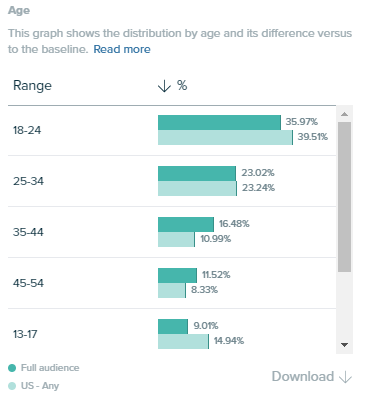
Audiense provides a full breakdown of age for each segment of your audience. As you see in the example above, the largest audience is 18-24, followed by 25-34. Interestingly, distribution of 35-44 and 45-54 years olds is notably larger than the baseline, so this is a key segment to take notice of.
Gender
Audience intelligence is especially pertinent when it comes to gender as it can help to prevent uninformed decision-making and gender stereotyping creeping into product marketing.
Within Audiense Insights you can access a detailed gender breakdown of your audience so you can understand the distribution of men and women within your audience. While useful, it’s important to look at demographics like gender and age holistically and in the context of the wider segment to understand your audience on a deeper level as focusing on demographics alone can be reductive.
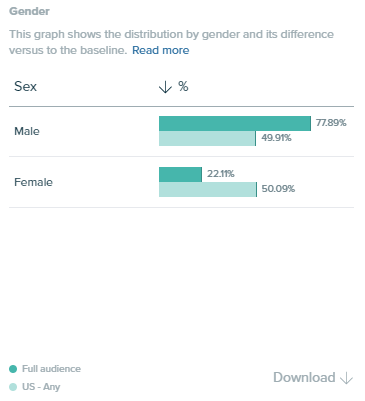
Location
Segmenting your audience by country or city is extremely useful for paid media targeting and allocating budgets to different campaigns accordingly. Knowing where your audience is based can also help to inform any cultural considerations that you may need to account for when marketing to specific regions. With Audiense Insights, you see how your audience is distributed at both country and more granularly, at city level.
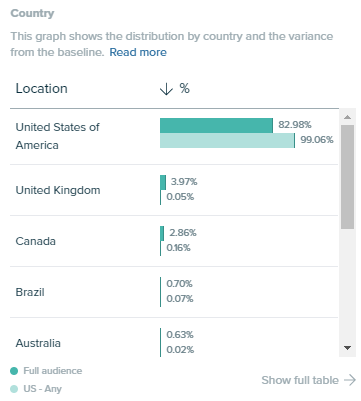
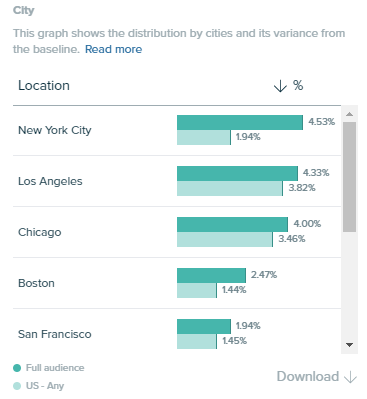
The limitations of demographic segmentation
Demographic segmentation can be a good starting point for unpicking your audience and developing a very basic understanding of who follows your brand, however it does have limitations. Demographics such as age and gender are mostly inferred based on assumptions and consumer behaviour, i.e. accounts they follow and interact with, so layering this data with other interest or psychographic insights can help to build a more comprehensive and accurate picture of your audience.
What’s more, increasingly consumers no longer want to be defined by fixed characteristics like age, gender or race. Instead, 65% define themselves by personality, the same percentage by values and 58% by hobbies, according to Relationships: A Status Update report by VICE. A mere 9% felt they should be defined by their gender expression, and an even smaller 7% felt they should be defined by age.
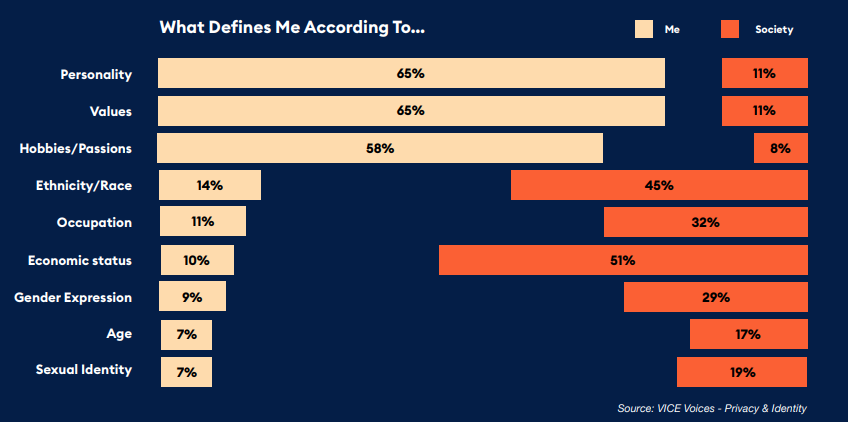
Clustering your audience by gender, age or location creates an assumption that all users within the segment are intrinsically similar and therefore like the same things, which is simply not the case. So, how do we move beyond this?
How does Audiense provide a solution to this?
Put simply, demographic segmentation does not offer the full picture; it is one of many pieces that make up your full audience. Audience Intelligence on the other hand creates a holistic, real time view that allows you to understand who makes up your audience, their personality, what they love, their online habits and what drives them.
Identifying Connected Communities
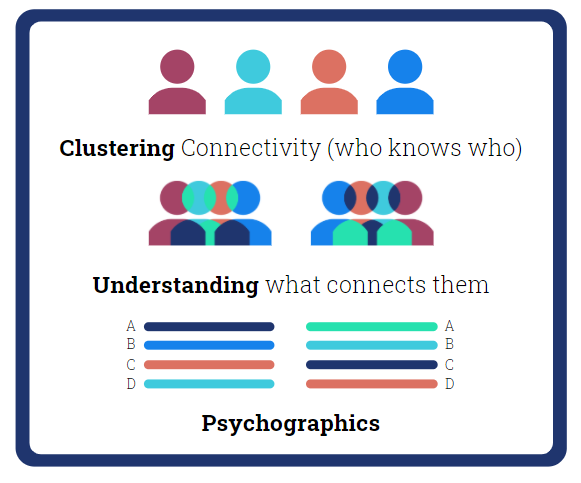
Instead of inferring the interests of audiences and clustering them accordingly, Audiense offers a different approach to social media consumer segmentation, enabling you to understand what makes each audience segment unique. Audiense works by grouping people based on how they are connected with other people in the audience and then determining the affinities or behaviours that make them unique. Combining multiple layers of audience data in this way enables you to create highly personalised and well-informed campaigns that really resonate with your audience.
Transform how you make decisions and discover new opportunities with Audiense Insights.
Learn more about The Magic of Clustering Audiences here.
Try Audiense Insights for free.







